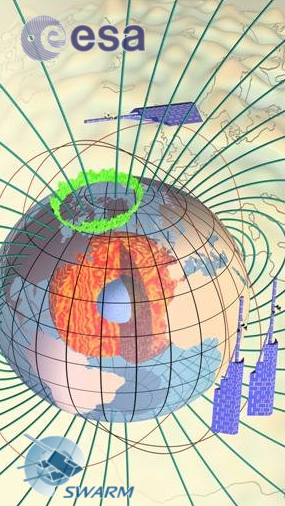Swarm, the fifth Earth Explorer mission approved in ESA's Living Planet Programme and launched on November 22, 2013, 1:02 pm (CET), consists of a constellation of three identical satellites in near-polar orbits between 400 and 550 km altitude.
Aim: The main objective of the Swarm mission is to provide the best ever survey of the geomagnetic field and its temporal evolution, and gain new insights to improve our knowledge of the Earth's interior and near-Earth's magnetic environment. Observations of the strength and direction of the magnetic field, the electric field and plasma densities and temperatures, navigational signals, and derived parameters enable novel research on the understanding of the various sources of the geomagnetic field.
GFZ has supported the mission development and scientific product definition, and is involved through several scientific and coordinating activities for its calibration and scientific exploitation.
The Official Swarm Website
Swarm Data Access
In accordance with ESA Earth Observation Data Policy, all Swarm Level 1b and Level 2 products are freely available by FTP to ESA-EO registered users (Fast Registration Procedure).
Workshops and meetings








